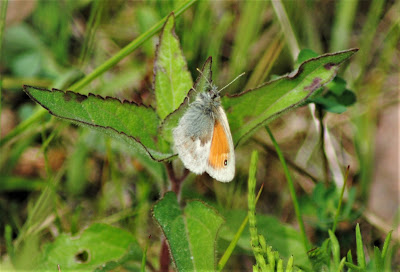This blog may help people explore some of the 'hidden' issues involved in certain media treatments of environmental and scientific issues. Using personal digital images, it's also intended to emphasise seasonal (and other) changes in natural history of the Swansea (South Wales) area. The material should help participants in field-based modules and people generally interested in the natural world. The views are wholly those of the author.
Thursday, 25 May 2023
Seeing the Changes 1801
Lots of new seasonal flora and fauna at Crymlyn Burrows. Pyramidal orchid (Anacamptis pyramidalis); Yellow rattle (Rhinanthus minor); Marsh cranesbill (Geranium palustre); Wild pansy (Viola tricolor); Fen ragwort (Senecio paludosus); Cornflower (Centaurea cyanus) and Black knapweed (Centaurea nigra) were all in bloom. Critters included Common blue damselfly (Enallagma cyathigerum); Cryptocephalus hypochaeridis and Oedemera nobilis beetles; and Small heath (Coenonympha pamphilus); female Common blue (Polyommatus icarus); Small copper (Lycaena phlaeas); male Orange tip (Anthocharis cardamines); Small blue (Cupido minimus) and male Common blue butterflies. All watched over by a Meadow pipit (Anthus pratensis).
Subscribe to:
Post Comments (Atom)
-
I n the UK and US, a pparently popular and successful vegan/vegetarian restaurants are reportedly closing or adding meat to their menus ( ...
-
Early ripening fruit may seem convenient but some folk think it confirms environmental stress. There's also a possibility th...


















%20mating%20NWCW.jpg)


No comments:
Post a Comment